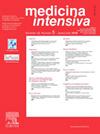肝硬化患者乳酸-白蛋白比与全因死亡率的关系:MIMIC-IV数据库分析
IF 3.1
4区 医学
Q2 CRITICAL CARE MEDICINE
引用次数: 0
摘要
目的探讨乳酸/白蛋白比值(LAR)对肝硬化患者全因死亡率的预测价值。设计回顾性观察性研究。重症监护病房(ICU)。患者或参与者:美国626例首次入住icu的肝硬化患者(MIMIC-IV v2.2)。主要变量为interestLAR指数、28天全因死亡率、90天全因死亡率。结果626例患者(男性60.86%)中,28天内死亡占27.80%,90天内死亡占39.14%。多变量Cox分析显示,较高的LAR与死亡率之间存在显著关联。调整混杂因素后,LAR升高增加了28天死亡风险[HR: 1.31 (1.21-1.42), P <; 0.001]。限制三次样条分析显示LAR与死亡率之间存在非线性关系。28天死亡率的拐点为1.583,低于该拐点的死亡率为2.29 (95% CI: 1.61-3.27, P <; 0.001);以上,人力资源是1.16(95%置信区间:1.02—-1.31,P = 0.021;P = 0.002)。90天死亡率的拐点为1.423,小于90天的死亡率为1.60 (95% CI: 1.04 ~ 2.47, P = 0.033);以上,人力资源是0.94(95%置信区间:0.75—-1.16,P = 0.542;P = 0.012)。结论slar预测28天和90天死亡率具有分段效应。LAR≥1.583表明28天死亡风险高,需要加强监测并可能进入ICU。对于90天死亡率,接近1.423的LAR可作为高危患者的早期预警并指导干预措施。持续的LAR监测有助于管理,但需要前瞻性研究来证实临床应用。本文章由计算机程序翻译,如有差异,请以英文原文为准。
Association between lactate-to-albumin ratio and all-cause mortality in cirrhosis patients: Analysis of the MIMIC-IV database
Objective
This study evaluates the predictive value of the lactate/albumin ratio (LAR) for all-cause mortality in cirrhosis patients.
Design
Retrospective observational study.
Setting
Intensive care unit (ICU).
Patients or participants
626 first-time ICU-admitted cirrhosis patients in the USA (MIMIC-IV v2.2).
Interventions
None.
Main variables of interest
LAR index, 28-day, and 90-day all-cause mortality.
Results
Of 626 patients (60.86% male), 27.80% and 39.14% died within 28 and 90 days, respectively. Multivariate Cox analysis showed a significant association between higher LAR and mortality. Adjusted for confounders, elevated LAR increased the 28-day mortality risk [HR: 1.31 (1.21–1.42), P < 0.001]. A restricted cubic spline analysis revealed non-linear relationships between LAR and mortality. For 28-day mortality, the inflection point was 1.583: below this, HR was 2.29 (95% CI: 1.61–3.27, P < 0.001); above, HR was 1.16 (95% CI: 1.02–1.31, P = 0.021; P = 0.002). For 90-day mortality, the inflection point was 1.423: below, HR was 1.60 (95% CI: 1.04–2.47, P = 0.033); above, HR was 0.94 (95% CI: 0.75–1.16, P = 0.542; P = 0.012).
Conclusions
LAR predicts 28-day and 90-day mortality with a segmented effect. An LAR ≥1.583 signals high 28-day mortality risk, necessitating intensified monitoring and potential ICU admission. For 90-day mortality, LAR near 1.423 serves as an early warning for high-risk patients and guides interventions. Continuous LAR monitoring aids management, but prospective studies are needed to confirm clinical utility.
求助全文
通过发布文献求助,成功后即可免费获取论文全文。
去求助
来源期刊

Medicina Intensiva
CRITICAL CARE MEDICINE-
CiteScore
2.70
自引率
20.00%
发文量
146
审稿时长
33 days
期刊介绍:
Medicina Intensiva is the journal of the Spanish Society of Intensive Care Medicine and Coronary Units (SEMICYUC) and of Pan American and Iberian Federation of Societies of Intensive and Critical Care Medicine. Medicina Intensiva has become the reference publication in Spanish in its field. The journal mainly publishes Original Articles, Reviews, Clinical Notes, Consensus Documents, Images, and other information relevant to the specialty. All works go through a rigorous selection process. The journal accepts submissions of articles in English and in Spanish languages. The journal follows the publication requirements of the International Committee of Medical Journal Editors (ICMJE) and the Committee on Publication Ethics (COPE).
 求助内容:
求助内容: 应助结果提醒方式:
应助结果提醒方式:


